#artist is giorgio vasari
Text
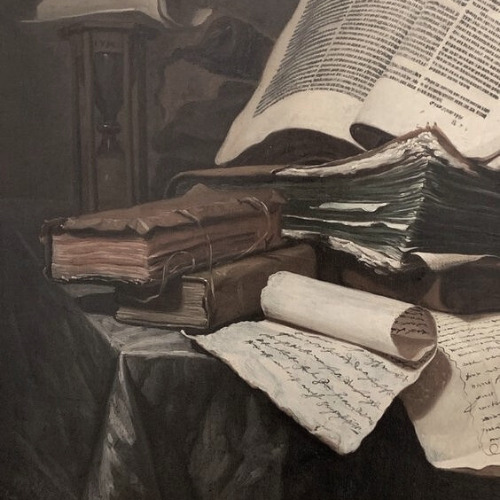








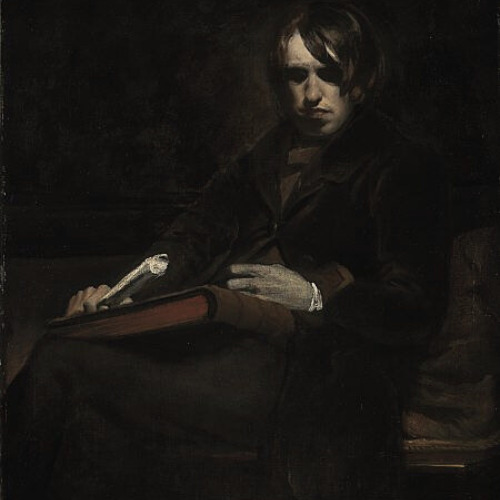





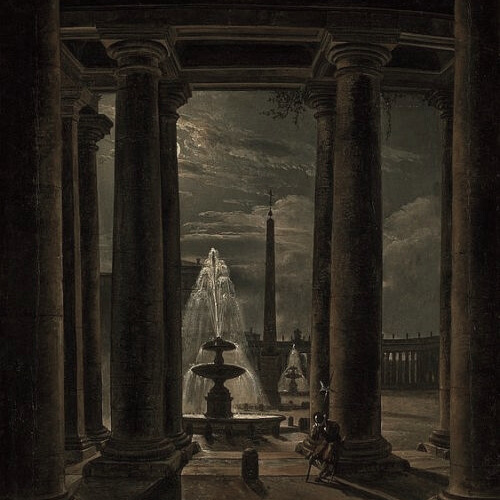

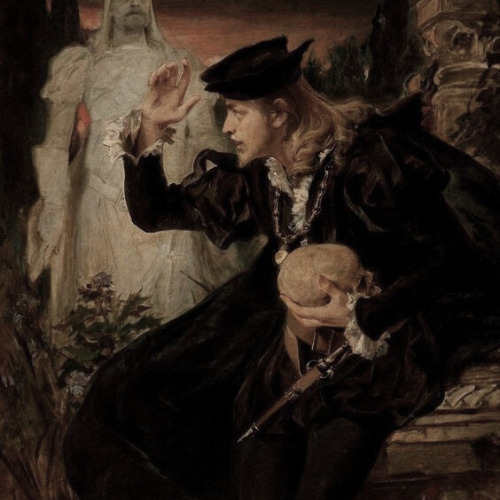
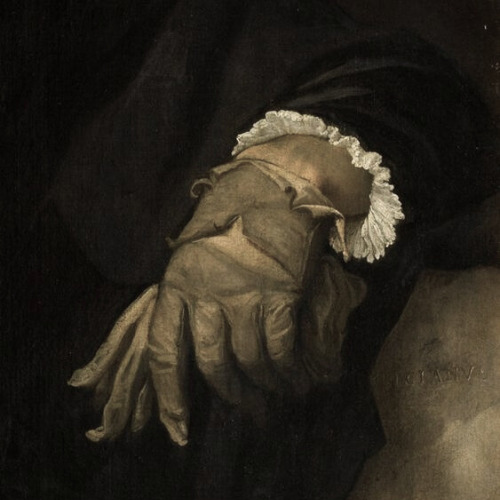

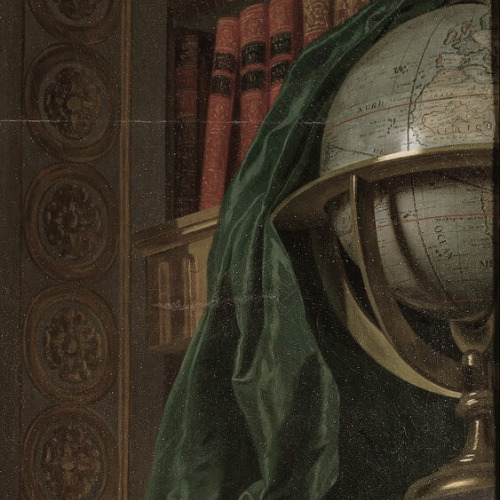



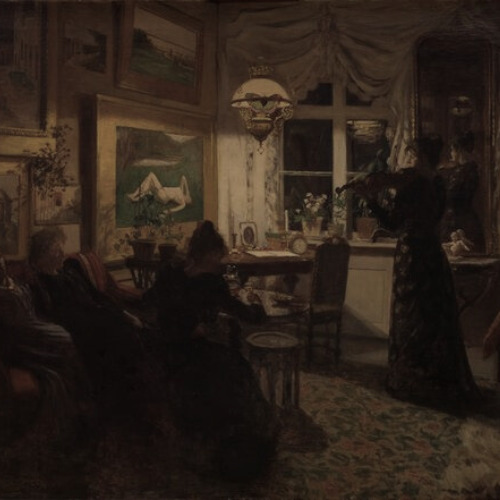



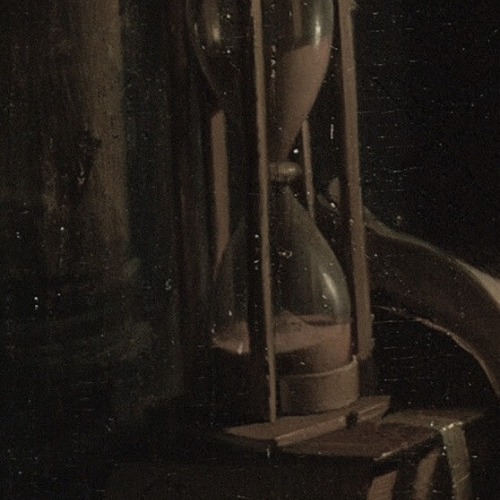

art aesthetics: dark acadmia
#cant find artist#artist is gerrit dou#artist is paul fischer#artist is james carroll beckwith#artist is sir anthony van dyck#artist is nicolas regnier#artist is hubert and jan van eyck#artist is eugene delacroix#artist is jan willem pieneman#artist is sir william fettes douglas#artist is wilhelm bendz#artist is carl holsoe#artist is jacopo tintoretto#artist is thomas wyck#artist is lindsay bernard hall#artist is franz ludwig catel#artist is pieter claesz#artist is pedro americo#artist is titian#artist is giorgio vasari#artist is alexander roslin#artist is jusepe de ribera#artist is anne francoise couloumy#-artist is carl holsoe#artist is anna petersen#artist is peter hasenclever#artist is irving ramsey wiles#artist is georges de la tour#artist is unknown-#art aesthetics
388 notes
·
View notes
Text




— red blue dilapidated study space — ⋆˙
#orientalism#edward said#symposium#plato#a portrait of the artist as a young man#james joyce#the lives of the artists#giorgio vasari#the undercommons#stefano harney#fred moten#critical theory#studyblr#booklr#studyinspo#study space#dark academia#light academia#dark academia aesthetic#light academia aesthetic#vintage#study blog#book blog#reading list#mine
93 notes
·
View notes
Text
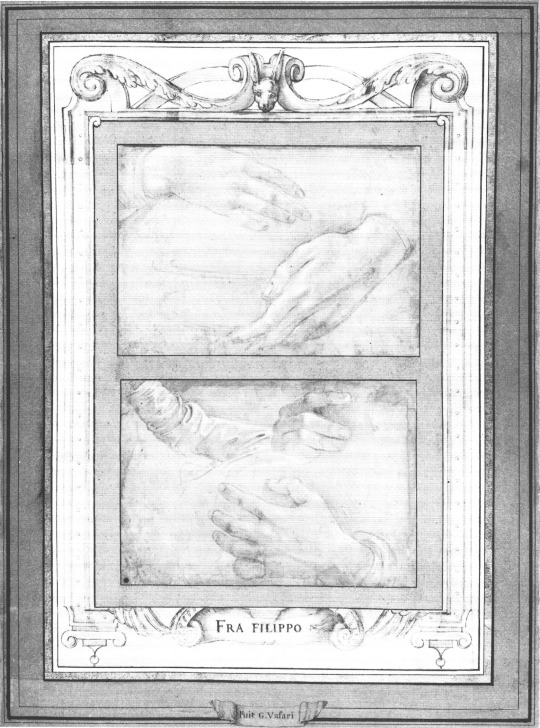
From Giorgio Vasari's Libro de' Disegni (Book of Drawings)
#my scan#drawing#art#art history#history#italian history#italian artist#renaissance#renaissance period#vasari#giorgio vasari#architecture#renaissance painter#architect#draw#pencil#hands#my scans#artists#artwork#scanned#sourced
21 notes
·
View notes
Text
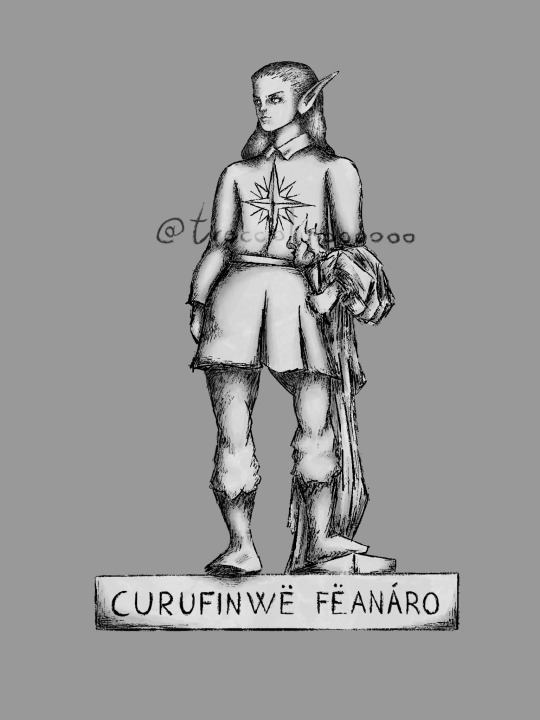
let me introduce Feanor Cellini
yesterday amaz0n publihed a new trailer for the second season of rings of power so fellowship of fans posted this
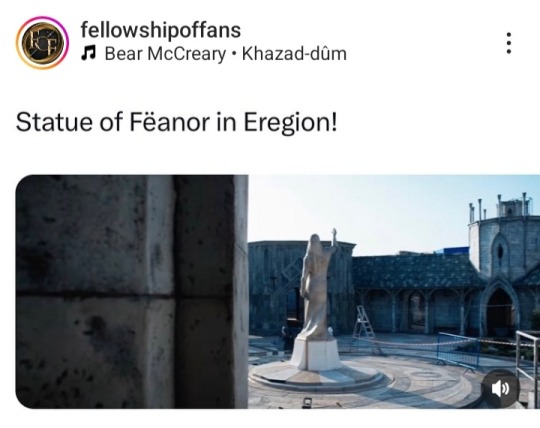
and I was "goddamn its daddy's statue!"
since I associate Feanor to Benvenuto Cellini ( they are both murderers, smiths, completely insane, anger issues and hated by Giorgio Vasari aka Pengolodh) I decided to redraw Cellini's staute with Feanor's aspect
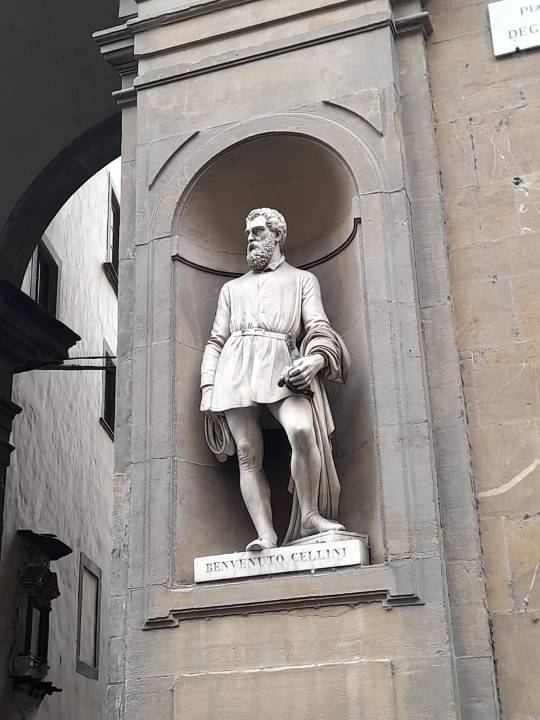
#silmarillion#tolkien#feanor#feanaro#curufinwe#feanaro curufinwe#benvenuto cellini#italian artists#statue#my art#do not steal#do not repost#giorgio vasari#pengolodh
17 notes
·
View notes
Photo

Giorgio Vasari, Allegory of Patience (Italian: L'Allegoria della Pazienza), c. 1552
9 notes
·
View notes
Note
Never Have I Ever read a Librarian! Marcus P fic. 🥰 I’m not really a Marcus P kinda girl, more of a Dave York (iykyk) girl BUT as someone who works at a library, Marcus P would be the best guy to get lost in the book shelves with 🤭😏
Hi, birdie <3 This is actually such a sweet idea! I haven't seen fics like this either! At first, I was just gonna send this ask out sending writers that see this your idea for a fic. But then I thought about it and something hit me, so here's my take on librarian!Marcus Pike. I gave it my own twist, but I hope you can still enjoy it <3

you're such a heavenly view
paring: Marcus Pike x f!Reader
rating: explicit (18+ minors DNI)
word count: 2.1k~
summary: He wants to be in love again. He's just not really sure how.
a/n: This was written on a whim. Thank you to the amazing anon for planting the thought of librarian Marcus in my head <3 Not beta-ed, all mistakes are my own so pls don't plagiarize them.
warnings: pining, Marcus Pike is shy and horny, male masturbation; no use of y/n
MY MASTERLIST


Marcus loved the quiet.
He loved the whisper of turning pages and scribbling pens being the only noise in the spacious library he worked at. A humdrum nine-to-five that most people tried to escape became his salvation. He felt calm, at peace, a feeling that wasn’t prominent in his life before.
When he came here over two years ago just to help his old friend out, with his heart ripped to shreds and falling apart, the walls of this place held it together. And then you and your gentle smiles as you checked out books put bandaids all over it, so it started healing.
Marcus first saw you a year ago, by that time he was already comfortably moving along the labyrinths of the abode of books, knowing every section almost by heart. He still remembered your tiny manicured fingers nervously tapping the reception table as he looked through the computer base for the availability of Giorgio Vasari’s "Lives of the Artists". Before you, art section was one he never frequented for two reasons: first, he didn’t need the reminder of the past that he tried to separate from his present; and second, he knew pretty much every book there by heart.
As his eyes bore into the screen, looking for the right title, with his peripheral vision he saw you burning a hole in the side of his face. Marcus couldn’t help but chuckle, it was a while since a beautiful woman had been interested in him. Or since he noticed. You hurried to stray your gaze away, and his smile became bigger, now showing his teeth. You saw him noticing you and got flustered, that only meant that you staring was intentional. Marcus confirmed that the book you needed was available, but since it was a rare edition you couldn’t leave with it. The library was surprisingly empty for the first month of autumn, but at least you wouldn’t have any problems with staying and doing your research there. You nodded, agreeing with him. The place was quite cozy, you thought that to yourself the moment you entered from the windy autumn street.
"Let me show you to the art section, it’s pretty difficult to navigate these corridors the first time you’re here." Marcus left the librarian desk he had been occupying for the last year and motioned his hand to the right direction.
"Only the first?" You raised your eyebrows and smiled. Damn, you were beautiful in your flared jeans and a big white t-shirt with a warm-looking sweater on top. Your hair in a messy bun, either it was messy because of the wind or because you wanted it to be. Anyway, you looked fantastic like that, so Marcus smiled back automatically.
"Well, the first fifty."
You laughed, and he stumbled at the sound. Marcus felt his cheeks burn with pride, he forgot how pleasant it was to make a pretty girl laugh.
It was over a year ago, and still he remembered that beautiful sound you let out. One of the beautiful moments you shared that he kept sealed in his mind. Even though all your interactions were friendly, and sometimes borderline flirtatious, something always stopped Pike, and he got used to seeing you leaving with a nod and a tight-lipped smile, now almost never lifting your eyes up to meet his as you sat studying behind one of the many similar wooden tables.
He cursed himself, cursed his cowardice and the fact that he got panic attacks any time he tried to tell you a compliment. He hated that he became tongue-tied whenever you asked his opinion on one of the books you checked out. And when his brain was swarming with knowledge, the influences the author had, or the way the work was transcending the time it was written in; his mouth only said ‘it’s a good book’ or worse ‘it’s not bad’. He wanted to punch himself, but that would mean lifting his arms that were numb and limp on both sides of his body.
Today was not an exception, unfortunately. Marcus was sitting behind his desk, pristine, clean and occupied only by his work computer and a book he had been reading during the quiet times. You came over less than half an hour ago, saying your usual hello and asking about yet another book on art. You’d almost read them all, and Marcus was frantically thinking what would happen when you check out the last book from the art section, a place in the library that no one else went to. He told you where to find a copy of "Janson’s History of Art" and you nodded, going in the right direction without needing his help anymore. You didn't look up at him when you took your usual place near the window and placed the book on the table.
Marcus sighed, looking as you brows furrowed when you read something and started rewriting it in your notebook. Art section was your place. Yours and his. It was special, at least for him. He had walked you there exactly forty nine times. Not because you couldn’t remember where to go, no, you were confident in your stride the third time; but because it became a sort of a joke between the two of you. Sometimes you’d just come over and ask him to show you where the art section was, telling him that it was only your 21st, 33rd, 45th time in the library and you didn’t have the opportunity to learn all the right turns yet. He laughed, but always walked you there. Sometimes you were silent, sometimes you’d ask him silly questions (‘What is the rarest book here?’ 'First edition of Oscar Wilde's "The Happy Prince and Other Tales" with the author's inscription.’; ‘What is the worst thing a person did in the library?’ ‘Tried to rip a page out of the first edition of Oscar Wilde's "The Happy Prince and Other Tales"’; ‘Did you stop them?’ ‘Kind of.’; ‘Is the horror section haunted?’ ‘Yes.’). You hadn’t asked him to walk you to the art section for a month now. Marcus even wanted to suggest it himself, but his tongue felt too heavy and big for his mouth whenever he tried.
So he was left with watching. Just like dozens of times before. As he quietly observed from a distance, Marcus couldn't help but lose himself in the beauty of your presence amidst the mundane decorations of his workplace.He thought that he knew you face better than his own by now. The structure of your cheekbones, the curve of your lip, the depth of your cupid’s bow. He could close his eyes and draw you in his sleep. You were engrossed in the book when another wave of hot air from the AC above you tousled your hair. Winter this year was abnormally cold, so to keep the building warm Marcus had to turn up the temperature on the AC pretty high. Maybe he overdid it today. He saw you wiping a lonely droplet of sweat running from your temple. Yes, he definitely overdid it today.
He reached to stand up and go to the temperature controller when you started tugging up your usual bulky green sweater, and dropped back into his chair as the material of your sweater and t-shirt stuck together, so you almost took both items off. Marcus choked on his saliva seeing so much of you that he never saw before. Sure, you wore knee-length shorts and oversized t-shirts during summer, sometimes you even put on a dress when it was too hot for anything else, but this was different. The swell of your naked stomach, the almost-not-there lacy edge of your black bra, fuck, it felt so intimate.
Marcus squeezed his thighs under the table, his cock getting hard with every thought his brain provides. Fuck, it was really not a time or a place for a boner, but you looked so… He pinched the bridge of his nose, shutting his eyes and trying to relax, but instead of that he saw images of your naked skin over and over again, followed by fake scenarios where he ripped the shirt off you, kissing your willing body with his greedy mouth. Marcus could almost feel the softness of your skin under his palms, and he bit his lower lip at the phantom feeling, trying to suppress a moan.
He didn’t notice how his legs brought him to the secluded area of the art section, his hands hysterically pulling out his stiff cock from the confines of his pants, while his mind completely shut off.
It was almost primal, the incandescent feeling inside him that made him spit in the palm of his hand before wrapping it around his shaft.
"Fuck," his whisper was quiet, even though it was unlikely that anyone could hear him anyway. There were less than eight patrons when he left the main hall, all of them engrossed in their literature of choice, and he still had an hour before he had to close.
His spit-slicked hand tightened around his cock as he moved it up and down, circling the weeping head every time. Goddamn, he was sick. Fucked up. Getting hard after seeing the stomach of the girl he had been swooning over for almost a year. What in the teenage hormones was this bullshit?
Your skin, the swelling of your stomach, the tiny dip of your belly button. Fuck, he wanted to dip his tongue in the little canyon of your body and hear you suffocating on giggles.
Up, down, up, down.
He looked down, watching his hand methodically moving around his fat cock. As he got closer to his orgasm, the veins that led from the base to the tip of his cock became more pronounced, the head getting darker with every stroke. "God-fucking-dammit, baby," he dropped his head back, punching a wall but barely noticing any pain as he got succumbed by his pleasure. "So fucking gorgeous. Mine. Mine. Only mine."
If anyone heard Marcus, they’d consider him a psycho, his hoarse whisper feverishly calling someone his when he was the only one in the room. He didn’t give a single fuck. In his little fantasy, right now, you were his. Only for him to touch, only for him to love. He tripped over the edge, as his mind flooded by the memory when you first laughed at his joke, and he came all over his fist moaning your name as quietly as possible, as four thick ropes of cum painted his skin pearly white.
Marcus didn’t hear the footsteps, orgasm claiming every sense in his body until he heard a quiet ‘oh’, the voice too familiar to mistake its’ owner.
"Fuck, fuck, oh God, sorry, this is not what you think it is." His eyes went wide at the sight of you. You were pressing your copy of "Janson’s History of Art" to your chest, face curious and almost… amused? He pulled his boxers up, trying not to wince when the thick rubber band scratched the sensitive skin of his spent cock.
"Isn’t it?" You raised your eyebrows at Marcus, and he remembered that he was still standing in front of you with his pants fully undone and his boxers stained with the cum he wiped on them in a hurry.
"No." He shook his head frantically, tugging on the zipper and trying to quickly zip it up when the hem of his shirt stuck in it and he cursed, almost tearing it out.
"So you weren’t just masturbating thinking of me, and the fact that you moaned my name as you came was just a coincidence?"
'How long had you been standing there?' Marcus thought. He heard your steps closing in on him, but didn’t dare to raise his eyes to see the disgust on your face. Instead, he continued fighting with the zipper.
"Yes," he nodded, and then immediately shook his head. "No. Look, I can explain." Marcus searched his brain for the right answer, for something that could fix all of this mess, but coming up empty. His sigh was deep, almost hurting his lungs as he gave up. "Okay, I maybe can’t explain, I’m just… Sorry."
"I’m not."
He snapped his head up so fast that the sides of his vision went black for half of a second. "What?"
You were close. Very close. If you reached your arm out you could help him with a zipper he abandoned in stupor.
"I was planning to come over at the last moment tomorrow and ask you to walk me here," you stepped even closer, placing your hand on his chest and feeling the rapid fire of Marcus’ heartbeat. "You know, for our last time."
He just nodded, the blood pumping in his ears made it almost impossible to understand what you were saying, so he just stared at your lips, unconsciously licking his.
"And then," both your hands circled his neck, burrowing in the slightly damp hair at his nape, "I was going to blow you right against the rare editions shelf."
"Wha..—"
Marcus wasn’t able to finish when your lips crushed into his, tasting each other for the first time. Suddenly, he wasn’t so tongue-tied anymore.

PLEASE WRITE A COMMENT IF YOU ENJOYED THE STORY ♥︎
143 notes
·
View notes
Text


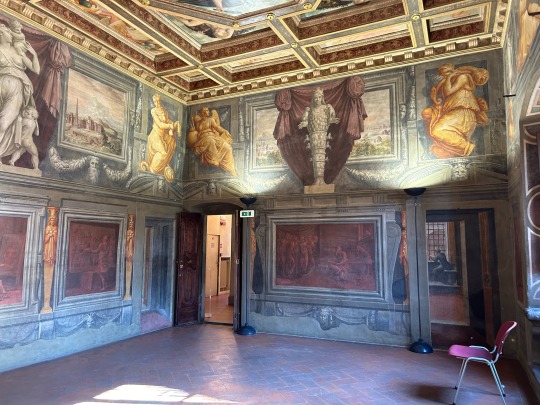
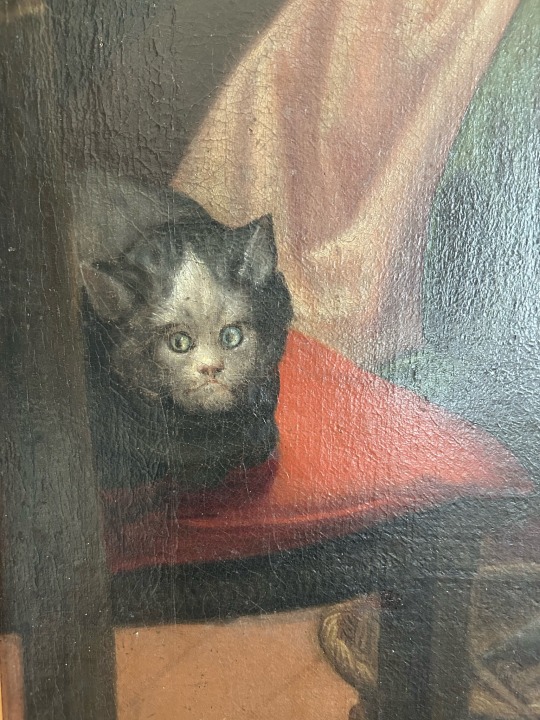
House of the Renaissance artist Giorgio Vasari. He decorated his own house. Arezzo, Italy.
March 20, 2024
#travel#giorgio vasari#Vasari#architecture#Arezzo#Italy#Italia#house#old house#interior design#original photography#iphonography#photographers on tumblr#photography#lensblr#renaissance#art history#historical architecture#cats of tumblr#cat#wanderingjana
35 notes
·
View notes
Text

▪︎ Judith and Holofernes.
Artist: Giorgio Vasari (Italian, 1511–1574)
Date: ca. 1554
Medium: Oil on panel
#history of art#16th century art#decorative arts#16th century#art#history#16th century painting#judith and holofernes#Giorgo Vasari#ca. 1554
80 notes
·
View notes
Photo
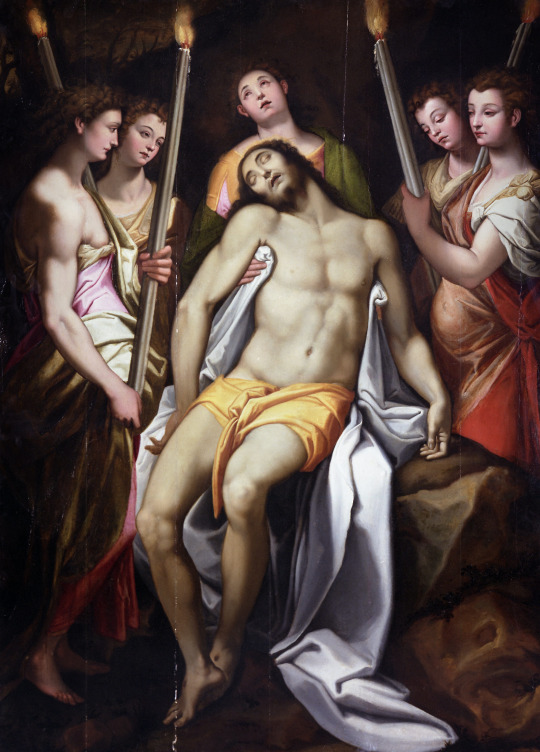
Taddeo Zuccari (Italian, 1529–1566)
Pietà with torchbearers, c.1560-66
Born in Urbino, the painter is considered the main representative of Italian Mannerism. He was Federico”Ts older brother, went to Rome aged 14 and soon became a very popular artist with wealthy clients and was able to establish his own business as a fresco painter. He received commissions from Pope Julius III and Paul VI together with Prospero Fontana, was active in the Villa Giulia and was allowed to paint the representative rooms in the Palazzo Farnese in Caprarola, which can probably be considered his principal work. He also decorated the Sala dei Fasti in the Palazzo Farnese in Rome. Zuccari attained a fortune which allowed him to build a palace in Rome. Due to his importance, he was buried near Raphael’s tomb in the Pantheon in Rome.
There are several other versions of the present work, for example in the Galleria Borghese, Rome (canvas, 232 x 142 cm.) or in the Galleria Nazionale delle Marche, Urbino (281 x 154 cm., image no. FAB60351). Upon closer examination, certain aspects suggest that the work was not fully completed before Zuccari’s death in 1666. When giving the painting a title, the wax candles were misunderstood on various occasions as “Attributes of the Passion of Christ”. The Farnese cardinal is said to have conveyed this idea for the depiction with candles to the painter. The famous biographer Giorgio Vasari already mentioned the Zuccari. The importance of the painting is also demonstrated by its distribution as a copperplate engraving.
The painting is considered a protected Italian cultural asset and is located in Italy.
#art#art history#european history#european art#italian art#classical art#peita#Pietà#pieta with torchbearers#Jesus Christ#The Son of God#Jesus#Christ#christianity#christentum#christendom#fine art#fine arts#oil painting#italian#italy#mediterranean#europe#italian peninsula#catholic art#catholic#roman catholic#roman catholic art#traditional art#Taddeo Zuccari
39 notes
·
View notes
Note
I'm sorry, I know shit about history, but is the guy holding Leonardo the shithead with 6 wives, or is he just a lookalike?
Don’t apologize! It’s supposed to be King Francis I
He’s the French king who had a habit of collecting famous Italian artists like Pokémon, and with Leonardo especially he basically spoiled him and let him do whatever he pleased at his palace in Amboise.
Leonardo lived the rest of his days in France and passed away there, and biographer Giorgio Vasari wrote an incredibly romanticized version of his death scene, in which King Francis held Leonardo in his arms until he died. It’s very likely it didn’t happen at all like that but it became super popular anyway so
33 notes
·
View notes
Text

From Giorgio Vasari's Libro de' Disegni (Book of Drawings)
#my scans#my scan#Giorgio Vasari#art#artist#art history#italian artist#italian architect#draw#drawing#history#italian history#renaissance#renaissance period#vasari
6 notes
·
View notes
Text
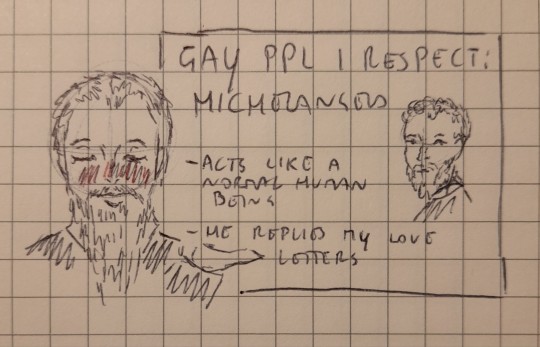

hello people another post no one will care about 👍
#giorgio vasari#michelangelo buonarroti#benvenuto cellini#hystory of art#art history#italian artists#my art#do not steal#do not repost#my comic#meme
2 notes
·
View notes
Text
I started reading this 1927 translation of Benvenuto Cellini's (1500-1562) Diary and only the foreword had me saying "what" out loud three times. He was appointed a war strategist by the pope in the Roman-French war and won many battles, only to go on to be a French court artist after the war for many years except he had to leave because he kept beefing with the mistress of Francis I. He was accused of murder and fled from Rome to Naples, but the guy he killed got better(???) so they let him come back after a few months. He did also end up going to prison for supposedly killing another man.
I've moved on to the first entry now, and he writes about his family's history only to get distracted and start writing about the history of his hometown of Florence only to get distracted again arguing to the reader about the city's supposed name sake. He argues the name comes from Fiorenzia as named by founder Julius Caesar and in fact not after Fluenzia, based on its location on the river of Arno. He goes on to argue, "Rome is situated by Tibern, Ferrara by Po, Lyon by Soane, Paris by Seine. And yet all these cities have different names, all of them different in origin," and I'm just like damn he kinda has a point. London isn't named after the Thames, Tokyo isn't named after the Sumida river and Stockholm isn't named after Mälaren, either...
Anyway I like this guy I think he's going to fill the gap Giorgio Vasari left behind since I finished his works last summer which is exactly what I'd hoped lmao
2 notes
·
View notes
Text
Overview and Criteria for Gothic Fiction
Gothic as a genre of fiction novel emerged in the late 18th century and early 19th century. Modern scholars frame these works as part of a Romanticist pushback against the Enlightenment era of calculated, scientific rationalism. In English literature, these may also have been artistic expressions of the collective anxieties of British people regarding the French Revolution. The term hearkens back to the destruction of the Roman Empire in the 5th century CE at the effect of Gothic peoples, an event that marks the beginning of the medieval era. As early as the year 1530 CE, Giorgio Vasari criticized medieval architecture as gothic, that is "monstrous", "barbarous", and "disordered" contrasted against the elegant and progressive neoclassical architecture reconstructions. In the late 20th century, a subculture of post-punk horror rockers began to be described as Gothic as well. This subcultural goth variation characterized itself by an aesthetic of counter-cultural macabre and "enjoyable fear".
Notable early works of what would become the gothic literary "canon" are listed as follows: The Castle of Otranto by Horace Walpole (1764), The Castles of Athlin and Dunbayne by Ann Radcliffe (1789), The Castle of Wolfenbach by Eliza Parsons (1793), and The Mysteries of Udolpho by Ann Radcliffe (1794). Udolpho is the name of a castle. Early gothic literature was intertwined with an admiration for gothic architecture, sorry to Vasari Giorgio who hated that sort of thing so much but is an outlier and should not be counted.
One example of French gothic literature in this vein is Notre-Dame de Paris by Victor Hugo, published in 1831 although the story is set in 1482 and it was about a gothic cathedral rather than a gothic castle. Northanger Abbey by Jane Austen is an affectionate parody of the gothic literature genre and a staunch defense of the gothic novels' artistic merits. It was completed in 1803 but not published until 1818 after the author's death.
In Northanger Abbey, a character recommends to her friend a list of books in this genre, all the titles of which were publications contemporary to the time the author was writing about them: The Italian by Ann Radcliffe, Clermont by Regina Maria Roche, The Mysterious Warning by Eliza Parsons, Necromancer of the Black Forest by Lawrence Flammenberg, The Midnight Bell by Francis Lathorn, Orphan of the Rhine by Eleanor Sleath, and Horrid Mysteries by Carl Grosse.
The appeal of these stories was less the architecture itself and more the emotions evoked by being haunted by the past, threatened by unknown histories, frightened by misunderstood monsters, and in awe of wilderness and nature. All of this would be set at or relative to a location: a gothic building. Heroines in gothic stories would commonly be abducted from convents that they sought refuge in, or confined to convents or other locations against their will when they try to exercise their freedoms. Other common tropes became the journey of a gothic heroine in an unfamiliar country, and the horrors of being made to rely on guardians who make impositions against her wishes or best interests. In other cases, the gothic horror mixed with gothic infatuation would be shown by an invasion of sorts by a foreigner in the heroine's home country, person of color, or the occupation of a disabled person. These works frequently lend themselves to queer readings.
The common and notable qualities of what works came to be considered gothic literature between the 1819 publication of The Vampyre by John William Polidori and the 1896 publication of The Werewolf by Clemence Housman, naturally expanded and evolved with the inclusion of more works within this genre. Even now in the 21st century the continued recognizability of the gothic applies to new additions to the genre. The criteria for what qualifies a gothic story follows:
Ill-Reputed Work. The story is accused of being degrading to high culture, bad for society, immoral, populist or counter-cultural. At the very least, it's considered bad art and ugly.
Haunted by the Past. This can be found in a work framed accordingly in the cultural context that inspired the authors, such as early 19th century English literature of this genre as a response to the French Revolution. Works emblematic of the Southern Gothic in the United States could be framed in the context of the anxieties surrounding the Civil War. More often, however, it is personal history that haunts a gothic character.
Architecture. This is not necessarily mere mention of a building, or even a lush description of literally gothic architecture. This is more a sense of location. While it stands to reason that confined locations are buildings, the narrative function of architecture can be served by themes of isolation and confinement. Social consensus that is impossible to navigate or escape is a gothic sentiment. This is, of course, more clearly qualified if the architecture is literally a building.
Wilderness. This is not necessarily natural environments, but rather situations that are unpredictable and overwhelming. Storms can be similarly admired, those "dark and stormy night"s. The anxiety invoked by nautical horror emerges from the contrast between a human being made to feel small and out of control when situated on the open ocean and all its depths and mysteries. The gothic simplicity of fairy tales relies on the inhospitable and chaotic woods full of bandits, wolves, and maybe even witches. Logically, a city should be more architecture than wilderness, but if the narrative purpose is chaotic unpredictable vastness horror rather than confinement horror then the city can become a gothic wilderness. This is, of course, more clearly qualified if the wilderness is literally the weather.
Big Mood Energy. This is what I call a collection of emotions evoked by the design of gothic literature. The sense of vulnerability in the face of grandeur, or overwhelming emotion, is known as Sublime. The betrayal of that which is supposed to be familiar is known as the Uncanny. A disruption or disrespect of identity, order, or security is known as the Abject. Gothic literature often evokes disgust and discomfort with ambiguity, or showcases melodramatic sentimentality, or includes heavyhanded symbolism. Gothic literature explores boundaries and deconstructs the rules that keep readers comfortable.
Optionally, Supernatural. As a response to Enlightenment-era science and rationalism, the supernatural found new importance in gothic literature, symbolically and in the evocative emotions it wrought.
The growing edge of genre gothic I think can be found in genre overlap with picaresque stories, detective mysteries, works of libertine sensationalism, science fiction, fairy tales, and dark academia. Quaint tropes are subverted or transformed, and new ones can emerge in the symbolic conversation that works of fiction can strike up with one another. I hope the above criteria remains a useful guide.
Sources:
Peake, Jak. “Representing the Gothic.” 30 April 2013, University of Essex. Lecture. https://www.youtube.com/watch?v=B51o-1KTJhw
Nixon, Lauren. “Exploring the Gothic in Contemporary Culture and Criticism.” 4 August 2017, University of Sheffield. Lecture. https://www.youtube.com/watch?v=JZP4g0eZmo8
"Why Are Goths? History of the Gothic 18th Century to Now". Wright, Carrie. 17 December 2022. www.youtube.com/watch?v=TrIK6pBj4f8
"8 Aspects of Gothic Books". Teed, Tristan. 19 June 2021. https://www.youtube.com/watch?v=NULLOYGiSDI
Burke, Edmund. A Philosophical Enquiry into the Origin of Our Ideas of the Sublime and Beautiful. London, Vernor & Hood, etc., 1798. Originally published in 1756.
Freud, Sigmund. The Uncanny, Penguin Books, New York, 2003. Originally published in 1919.
Kristeva, Julia. Powers of Horror: An Essay on Abjection, translated by Leon Roudiez, Columbia University Press, New York, NY, 2010. Originally published in 1984.
Commentary and reading list under Read More.
Commentary
I owe to Tristan Teed the idea of framing emergent gothic literature as countercultural to Enlightenment rationalism and science, and this pushback symbolized by wilderness; Dr. Jak Peake for contextualizing gothic literature as an artistic response to civic unrest in general, and highlighting the fear of seductive immigrants in Bram Stroker's Dracula more specifically; Carrie Wright for the feminist readings of the literary references in Jane Austen's Northanger Abbey, and Dr. Lauren Nixon framing the term gothic as originally meaning bad art—the lattermost aspect I personally consider integral to the genre as it must remain a constant interrogation of what artistic expression we as a society consider "bad art" and why. Both Wright and Teed inspired the aspects list applied to an otherwise categorization-defiant genre that gothic literature is. Critical Race Theory readings and Queer Theory readings of works considered part of gothic literature canon, I would say are informed by the works themselves being very suggestive of these readings. Sheridan Le Fanu's 1872 Carmilla influenced Rachel Klein's 2002 The Moth Diaries that blurred the lines between the homosocial and the homoerotic at a girl's boarding school. Florian Tacorian (not listed in these citations, but go watch his videos) highlighted Romani presence in adaptations of Victor Hugo's Notre-Dame de Paris, as well as Emily Brontë's 1847 novel Wuthering Heights. The work of another Brontë sister, Charlotte Brontë, is more often mentioned as though closer to the core canon gothic literature, and the eponymous Jane Eyre contends with a Creole woman confined to the attic of her new home (this was written in 1847, the race issue was made explicit in Wide Sargasso Sea by Jean Rhys published in 1966 that was a retelling of Jane Eyre.)
Notes on the works of gothic literature mentioned: As of this writing, I have read Northanger Abbey, The Vampyre, Carmilla, Dracula, and only half of Notre-Dame de Paris. I have only watched a movie adaptation of The Moth Diaries. (Update as of the 8th of October 2023: I finished reading The Moth Diaries by Rachel Klein. This whole essay was posted on the 1st of October 2023.) (Update as of December 2023: I finished reading Jane Eyre.) Despite taking the internet handle Poe, American gothic literature is pretty much completely alien to me. I might have read a handful of other works that might be arguably gothic, but have not mentioned them here so I would not count them in a list of works that are mentioned in this essay and that I have personally read. The initial list was a semi-facetious argument for the presence of gothic architecture in gothic literature based on the titles alone. Note also my focus on gothic literature from the British Isles, with a mention of only two titles from Germany (Der Genius by Carl Grosse, translated into the English The Horrid Mysteries by Peter Will; and Der Geisterbanner: Eine Wundergeschichte aus mündlichen und schriftlichen Traditionen by Karl Friedrich Kahlert under the pen name Lawrence Flammenberg, translated into the English Necromancer of the Black Forest by Peter Teuthold that was first published in 1794) and only one from France (Notre-Dame de Paris 1482 by Victor Hugo). This is not to say that there was little to no Romanticist movement in Germany or France in the 18th and 19th centuries compared to Britain. Friedrich Maximilian Klinger's stageplay Sturm und Drang premiered in 1777 and lent its name to a proto-Romantic artistic era that was supremely Sublime and Big Mood Energy. The earliest French gothic novel I could find via a cursory search engine search was Jacques Cazotte's Le Diable Amoureux, 1772, and I deliberately selected Notre-Dame de Paris for mention instead to demonstrate the continued theme of architecture and variety in architecture: churches as well as castles, and to affirm the representation of disability in gothic literature because Quasimodo (a character in the book) is deaf and according to John Green had contacted spinal tuburculosis that left the character hunchbacked. I have not read any of Le Diable Amoureux, let alone the half that gave me the temerity to list Notre-Dame de Paris among these gothic works.
This sparseness is due to my own interest in the emergence of English-language gothic literature focused on Britain between the years 1789 and 1830, in keeping with Ian Mortimer's definition of the Regency era in Britain. That, and the information from the sources I have cited, are what I based the criteria that I offer for what makes a novel genre-compliant to gothic. The narrative psychology and historicist analyses of The Castle of Otranto as an outlier published earlier than the timeframe I confine myself to, is for another essay perhaps written by somebody else. Similarly, my argument for the lineage of picaresque heroes from Paul Clifford to The Scarlet Pimpernel, Don Diego "Zorro" de la Vega, and ultimately the angst-filled cinematic version of Bruce Wayne as overlapping the picaresque with the gothic is a blog post for another time. I have read some works by the Maquis Donatien Alphonse François de Sade and I utterly and unutterably abhor all of it, will the spectre of his abysmal depravity ever cease to haunt me—but I think I can make an argument for his works being gothic even as he argued for himself that they were not; I have no plans of doing so.
My main intention in writing this overview and criteria is to lay the groundwork for examining the overlap between Gothic as a genre and Dark Academia as a genre, which I aim to evaluate in future essays by using this criteria.
List of Works Mentioned Above
The Castle of Otranto by Horace Walpole (1764)
Le Diable Amoureux by Jacques Cazotte (1772)
The Castles of Athlin and Dunbayne by Ann Radcliffe (1789)
The Castle of Wolfenbach by Eliza Parsons (1793)
The Mysteries of Udolpho by Ann Radcliffe (1794)
Necromancer of the Black Forest by Lawrence Flammenberg (translated by Peter Teuthold, 1794)
The Horrid Mysteries by Carl Grosse (translated by Peter Will, 1796)
The Italian by Ann Radcliffe (1796)
The Mysterious Warning by Eliza Parsons (1796)
Clermont by Regina Maria Roche (1798)
The Midnight Bell by Francis Lathorn (1798)
Orphan of the Rhine by Eleanor Sleath (1798)
Northanger Abbey by Jane Austen (1818)
The Vampyre by John William Polidori (1819)
Paul Clifford by Edward Bulwer-Lytton (1830)
Notre-Dame de Paris 1482 by Victor Hugo (1831)
Wuthering Heights by Emily Brontë (1847)
Jane Eyre by Charlotte Brontë (1847)
Carmilla by Sheridan Le Fanu (1872)
Dracula by Bram Stroker (1897)
The Werewolf by Clemence Housman (1896)
The Scarlet Pimpernel by Emma Orczy (1905)
Wide Sargasso Sea by Jean Rhys (1966)
The Moth Diaries by Rachel Klein (2002)
9 notes
·
View notes
Text
For half a century, the Sernesi family lived in a storied villa overlooking Florence where the Renaissance artist Michelangelo was raised and which he later owned. The property came with several buildings, an orchard and a drawing of a muscular male nude etched on the wall of a former kitchen. Tradition has it that the work was drawn by a young Michelangelo, though scholars are not as sure.
Last year, the Sernesi family sold the villa. Now they want to sell the mural drawing, which was detached from its original location in 1979 so that it could undergo a much-needed restoration. Art historians have identified the figure, etched with charcoal or black chalk on plaster and measuring about 40 by 50 inches, as a “triton,” a god of the sea, or a “satyr,” part man part beast.
Over the decades, the drawing has been loaned as a Michelangelo work to exhibitions in Japan, Canada, China and, most recently, the United States, where it was included in the Metropolitan Museum’s blockbuster 2017 show “Michelangelo: Divine Draftsman and Designer.” The catalog entry for that exhibition, by Carmen C. Bambach, the Met’s curator of drawings and prints, describes it as “the only surviving manifestation of Michelangelo’s skill as a draftsman in large scale.”
News that the drawing is going on the market is likely to expand what has until now been a rather low-key, academic debate over the authorship of a work that has remained in private hands, and mostly out of the public eye, for the past five centuries.
[Info about the auction house & Italian law that I didn't bother pasting.]
The Sernesis track the drawing’s attribution to Giorgio Vasari, Michelangelo’s contemporary biographer, who wrote that the young artist honed his skills by drawing on “papers and walls,” though Vasari does not give precise indications where. Some visitors to the villa over the centuries wrote of seeing Michelangelo’s doodles there.
When the drawing first began making the rounds in exhibitions, several of the catalog entries attributing the piece to Michelangelo were written by Giorgio Bonsanti, an Italian Renaissance expert who also oversaw the 1979 restoration. “I just can’t imagine another person entering Michelangelo’s house and drawing a figure on the wall of his kitchen,” he said.
We can all agree Joe drew this, right? Joe & Nicky had dinner at Michelangelo's one day, they all had wine, and Joe & Michelangelo got into a debate/argument about who was the better artist. And they settled it by sketching on the walls. Somehow Joe's survives but Michelangelo's doesn't.
3 notes
·
View notes
Text
Why is the Mona Lisa so famous?
We know of the warm tones of her skin, how her hair flows like silk cascading over her
shoulders as she sits and looks beyond the four corners of her frame with an enigmatic
expression.
The known masterpiece that captures the essence of femininty and grace: The Mona
Lisa.
But why is the Mona Lisa so famous?

It was as dawn broke over Paris on the 21st of August in 1911, Vincenzo Peruggia hoisted a painting off the wall and slipped down the back stairs of the Louvre. He was close to freedom, the exit just before him when he encountered a two pronged problem — the door was locked and footsteps were approaching.
Tucked under Peruggia’s arm was Leonardo da Vinci’s “Mona Lisa.”
It's arguably the world's most famous painting today. But how did it achieve its status?
Leonardo is thought to have started the portrait in 1503 at the request of a Florentine businessman who wanted a portrait of his wife, Lisa Gherardini.
He continued working on the painting for more than 10 years, but it was un?nished by the time he died.
Over his lifetime, Leonardo conducted groundbreaking studies on human optics, which led him to pioneer certain artistic techniques.
Some can be seen in the “Mona Lisa.”
Using “atmospheric perspective,” he made images at greater distances hazier, producing the illusion of profound depth. And with “sfumato,” he created subtle gradations between colors that softened the edges of the forms he depicted. He used many other elevated techniques which is discussed in this in depth analysis done by the channel Great Art Explained: https://www.youtube.com/watch?v=ElWG0_kjy_Y
youtube
All of this is striking, but is it enough to make the “Mona Lisa” the world’s most famous painting?
Many scholars consider it an outstanding Renaissance portrait—but one among plenty.
And history is full of great paintings.
Indeed, the “Mona Lisa’s” rise to worldwide fame depended largely on factors beyond the canvas.
King François the First of France purchased the painting and began displaying it after Leonardo’s death. Then, in 1550, Italian scholar Giorgio Vasari published a popular biography of Italian Renaissance artists, Leonardo included. The book was translated and distributed widely, and it contained a gushing description of the “Mona Lisa” as a hypnotic imitation of life.
Over the years, the “Mona Lisa” became one of the most enviable pieces in the French Royal Collection.
It hung in Napoleon’s bedroom and eventually went on public display in the Louvre Museum.
There, visitors ?ocked to see the once-private treasures of the deposed aristocracy. During the 1800s, a series of European scholars further hyped the “Mona Lisa” up, ?xating to a conspicuous degree on the subject's allure.
In 1854, Alfred Dumesnil said that Mona Lisa’s smile imparted a “treacherous attraction.”A year later, Théophile Gautier wrote of her “mocking lips” and “gaze promising unknown pleasures.”
And in 1869, Walter Pater described Mona Lisa as the embodiment of timeless feminine beauty.
By the 20th century, the portrait was an iconic piece in one of the world’s most famous museums.
But the “Mona Lisa” wasn’t yet a household name.
It was Peruggia’s 1911 heist that helped it skyrocket to unprecedented fame. Having been contracted to make protective cases for the Louvre, it wasn’t totally inconceivable for Peruggia to be locked inside the museum.
And, lucky for him, when a workman encountered him in the stairwell, he simply helped Peruggia open the door and let him walk out into the morning.
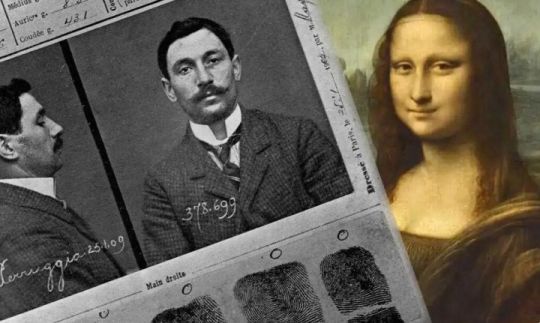
The theft made international headlines.
People gathered to see the blank space where the “Mona Lisa” once hung. The police interviewed Peruggia because he had worked at the Louvre, but they never considered him a suspect.
Meanwhile, they interrogated Pablo Picasso because of his connection to a previous Louvre theft, but eventually let him go.
For two years, Peruggia kept the painting in a false-bottom suitcase, then smuggled the “Mona Lisa” to Italy and arranged to sell it to a Florentine art dealer. He saw himself as an Italian patriot returning an old master’s work. But instead of being celebrated as such, he was immediately arrested.
With the mystery solved, the “Mona Lisa” went back on display to large crowds, and newspapers took the story for a victory lap.
In the following decades, conceptual artist Marcel Duchamp mocked it; Nazi art thieves pursued it; Nat King Cole sang about it; and museumgoers wielding stones, paint, acid, and teacups attacked it.
More than 500 years after its creation— eyebrows and eyelashes long since faded— the “Mona Lisa” is protected by a bulletproof, earthquake-safe case.
Now, it stands perhaps less as an exemplary Renaissance portrait and more as a testament to how we create and maintain celebrity.
14 notes
·
View notes